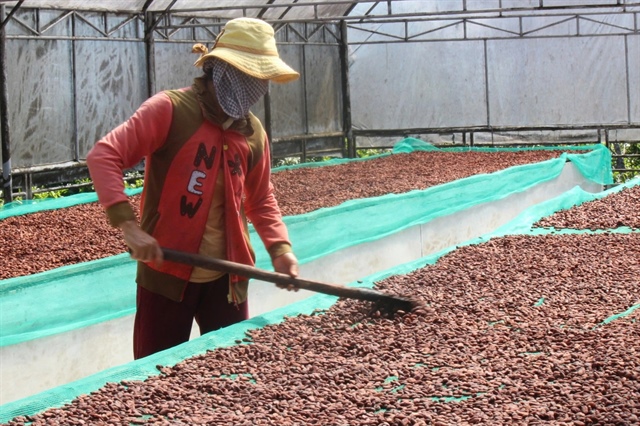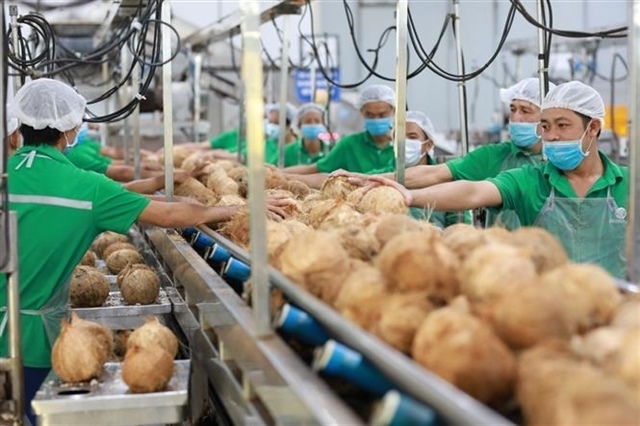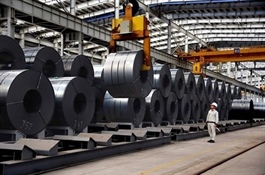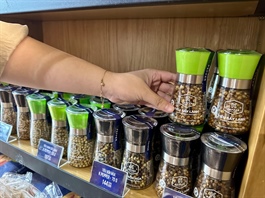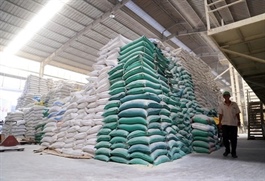With surging cocoa bean prices, candy companies face tough times in Vietnam
With surging cocoa bean prices, candy companies face tough times in Vietnam
With record-high cocoa bean prices, many candy companies are struggling to stay afloat in Vietnam.
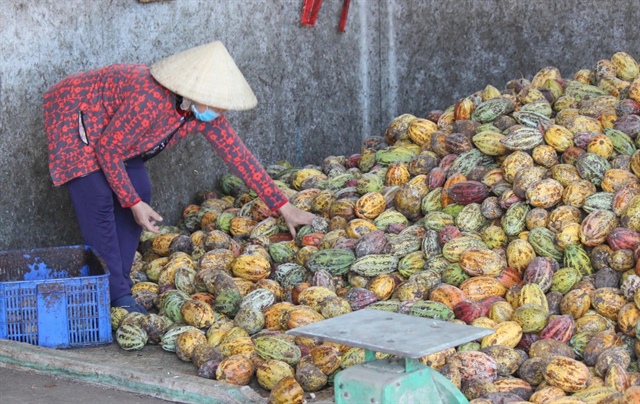
The selling price of fresh cacao pods has reached record highs, benefiting many farmers in Vietnam. Photo: N.Tri / Tuoi Tre |
While the surge has allowed growers to earn substantial profits, it has also created significant challenges for candy manufacturers.
Africa is responsible for nearly 75 percent of the world's cocoa bean production, and supply cuts from this region have been a key factor driving up cocoa prices globally.
Cocoa bean prices on the rise
The price of fresh cocoa beans in Vietnam's Central Highlands has tripled over the past year, with farmers now selling them for between VND11,500 (US$0.46) and VND13,000 ($0.52) per kilogram.
Prices for fermented dried cocoa beans have also surged, reaching record highs of VND165,000 ($6.62) to VND185,000 ($7.42) per kilogram, nearly doubling over the past year.
Dang Truong Khanh, director of Ca Cao Trong Duc Company Limited in Dong Nai Province, southern Vietnam, said bulk fresh cocoa beans are currently priced at VND12,500 ($0.50) per kilogram, the highest in decades.
Farmers are now earning profits of VND200-250 million ($8,019-10,024) per hectare of cacao trees, a strong return.
Khanh attributed the price surge to reduced global supply caused by climate change and political instability in Africa, the world's primary cocoa bean producer.
|
|
| Cocoa beans undergo processing before becoming a key ingredient in chocolate production. Photo: N.Tri / Tuoi Tre |
Challenges for confectionery manufacturers
Meanwhile, demand continues to grow, pushing prices higher, and confectionery manufacturers are facing difficulties due to reduced supply and skyrocketing raw material costs.
A representative from Orion Food Vina Co. Ltd., a leading confectionery producer in Vietnam, said rising raw material costs, particularly for cocoa beans, are significantly affecting production expenses for products like ChocoPie.
"We are working hard to keep prices stable for consumers as long as we can," the spokesperson said.
The global chocolate production chain, which depends on 80-90 percent of the world’s cocoa bean supply, has been hit by a 2.5- to 3-fold increase in prices over the past year. As a result, companies have raised chocolate rates by 15-30 percent since January.
Despite these hikes, businesses remain cautious about price adjustments to ensure sales remain steady amidst declining consumer demand.
According to a representative from the Food and Foodstuff Association of Ho Chi Minh City, any price spike should be reasonable to maintain consumer purchasing power.
"Confectionery consumption is relatively slow this year," the representative noted. "We expect demand during the Tet holiday [in January] may decrease 10-20 percent compared to previous years."
Many firms believe that more manufacturers worldwide are turning to Vietnam for cocoa bean supply given severe shortages in Africa.
This shift elevates competition and presents an opportunity for domestic cacao tree cultivation through domestic exploitation as Vietnamese products gain popularity for their unique flavors.
In 2022, Vietnam churned out 5,300 tonnes of cocoa beans across approximately 3,400 hectares.
However, this year's yield is expected to be lower because of significant area loss.


